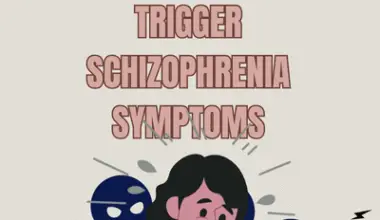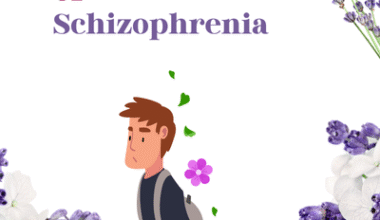Major life changes such as moving to a new house, introducing a new pet or baby into the house, or even the loss of an owner, can cause significant stress in cats. Cats are creatures of routine, and sudden changes to their environment or social structure can make them feel unsafe or anxious. This stress can show up in various ways, including hiding for long periods, sudden aggression towards people or other pets, refusing to eat, excessive meowing, or developing compulsive behaviours like over-grooming to the point of creating bald patches.
In this post, we’ll explore the topic of Can Cats Have Schizophrenia?, examine the meaning behind their odd behaviors, and discuss when to seek veterinary care.
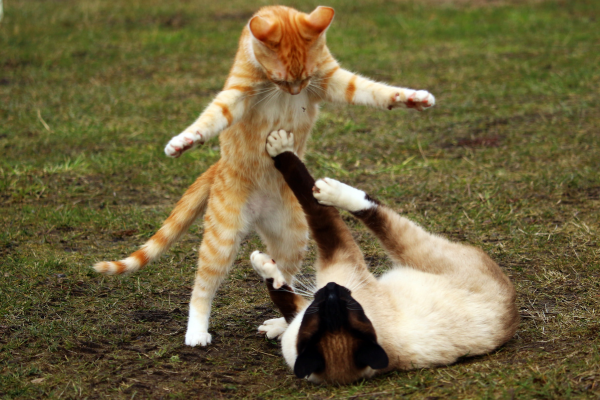 What is Schizophrenia, and Can it Affect Animals Like Cats?
What is Schizophrenia, and Can it Affect Animals Like Cats?
Schizophrenia is a complex mental disorder in humans that affects how a person thinks, feels, and behaves. It often involves symptoms like hallucinations (seeing or hearing things that aren’t there), delusions (false beliefs), disorganized thinking, and problems with daily functioning. It usually develops in late adolescence or early adulthood and requires medical treatment and therapy to manage.
But can animals, especially cats, have schizophrenia?
No. Schizophrenia is a human-specific disorder linked to the way our brain is structured and how we process thoughts and reality. Cats don’t develop schizophrenia; humans do because their brains function differently. However, cats can exhibit behaviors that seem similar, such as staring into space, sudden aggression, extreme fearfulness, or chasing invisible objects.
These behaviors usually aren’t caused by schizophrenia but could be linked to other issues like neurological disorders, feline hyperesthesia syndrome, anxiety, or vision problems.
What Are the Five Causes of Schizophrenia?
Schizophrenia is a complex mental health disorder, and researchers believe it develops from a combination of genetic, biological, and environmental factors. There is no single cause, but several key influences can increase a person’s risk of developing the condition. Understanding these factors can help explain why schizophrenia appears in some people and not in others. Here are five major causes commonly linked to schizophrenia:
- Genetics
Having a family history of schizophrenia significantly increases the risk. While it doesn’t mean a person will develop the disorder, certain genes inherited from parents can make someone more vulnerable, especially when combined with environmental triggers. - Brain Chemistry and Structure
Imbalances in brain chemicals like dopamine and glutamate are believed to play a major role in how the brain processes thoughts, emotions, and perceptions. People with schizophrenia often show structural differences in their brains, such as enlarged ventricles or reduced gray matter, which may contribute to symptoms. - Prenatal and Birth Factors
Complications during pregnancy or birth, such as exposure to viruses, malnutrition, or a lack of oxygen at birth, can affect brain development. These early disruptions may increase the risk of developing schizophrenia later in life by altering how the brain forms and functions. - Substance Use
Using certain mind-altering drugs, especially during teenage years or early adulthood, can trigger schizophrenia in people who are already at risk. Drugs such as cannabis, LSD, or amphetamines can affect brain chemistry and potentially bring on symptoms earlier. - Chronic Stress or Trauma
High levels of stress, particularly during critical stages like childhood or adolescence, can impact brain development and functioning. For those who are genetically vulnerable, experiencing trauma or prolonged stress may act as a trigger that sets off the first signs of schizophrenia.
 What Is the Mysterious Link Between Cats and Schizophrenia?
What Is the Mysterious Link Between Cats and Schizophrenia?
The mysterious link between cats and schizophrenia comes from research on a parasite called Toxoplasma gondii, which causes an infection known as toxoplasmosis. Cats are the primary hosts of this parasite, and it spreads through their faeces. Humans can become infected by cleaning litter boxes, gardening in contaminated soil, or eating undercooked meat containing the parasite. Studies have found that people infected with Toxoplasma gondii have a slightly higher risk of developing schizophrenia. This is because the parasite can affect the brain, altering chemicals like dopamine, which plays a role in schizophrenia.
However, it’s important to understand that this link does not mean owning a cat causes schizophrenia. The risk is linked to the infection, not the cat itself. Many people with cats never develop schizophrenia, and the risk of infection can be greatly reduced by practicing good hygiene, such as washing hands after handling litter and cooking meat thoroughly.
Do Animals Get Schizophrenia?
Schizophrenia is a severe mental disorder that affects how humans think, feel, and perceive reality. It involves symptoms like hallucinations, delusions, disorganized thinking, and social withdrawal. But when it comes to animals, especially pets like cats and dogs, the situation is different.
Currently, there is no evidence that animals can develop schizophrenia in the same way humans do. Schizophrenia is deeply connected to human brain structure, genetics, and complex thought processes. Animals do not have the same brain wiring or cognitive patterns that lead to human schizophrenia.
However, animals can suffer from mental health and neurological disorders that cause behavioral changes similar to some schizophrenia symptoms. For example:
- Cats may show sudden fearful behaviour, aggression, or chase invisible objects, often caused by conditions like feline hyperesthesia syndrome, neurological issues, or anxiety.
- Dogs can develop cognitive dysfunction syndrome, especially as they age, leading to confusion, disorientation, and behavior changes that resemble dementia more than schizophrenia.
- Rodents and primates used in research are sometimes given drugs to create schizophrenia-like behaviors to study treatments, but these are induced symptoms and not naturally occurring schizophrenia.
What You Should Know About Mental Illness in Pets
Mental illness in pets is often overlooked, but it’s a real and important issue that can affect their behaviour, health, and quality of life. Unlike humans, pets can’t tell us how they feel, so it’s up to us to recognise the signs.
Mental illness in pets can show up as anxiety, depression, obsessive-compulsive behaviours, or cognitive dysfunction as they age. Dogs may develop separation anxiety, leading to destructive behaviour when left alone, while cats can suffer from conditions like feline hyperesthesia syndrome, causing sudden mood changes and strange behaviours.
Stressful environments, trauma, neglect, lack of stimulation, or sudden life changes can trigger or worsen these mental health issues. If your pet shows unusual behaviours such as aggression without reason, extreme fearfulness, loss of interest in activities, or repetitive actions, consult a vet.
How We Can Help Mental Illness in Pets
Mental illness in pets can have a serious impact on their daily life, behaviour, and overall health. As responsible pet owners, it’s important to recognise the signs early and take practical steps to support their mental wellbeing. But what exactly can we do to help pets struggling with mental illness?
1. Recognise the Signs Early
The first step to helping mental illness in pets is recognising that something is wrong. Watch for changes like sudden aggression, hiding, excessive licking, howling, chewing furniture, avoiding interaction, or staring into space. Early detection makes treatment easier and prevents behaviours from worsening.
2. Consult a Veterinarian
Always start by visiting your vet. Many behaviours that seem like mental illness in pets can be caused by underlying medical problems such as pain, neurological conditions, thyroid issues, or infections. A thorough check-up will help rule out these causes and allow your vet to guide you on the best treatment options to support your pet’s health and behaviour.
3. Consider Professional Behaviour Therapy
If your pet’s mental illness is diagnosed, working with an animal behaviourist or trainer experienced in anxiety, phobias, and compulsive behaviours can help. They use behavioural modification techniques to change your pet’s response to triggers and reduce distressing behaviours over time.
4. Create a Safe, Predictable Environment
Mental illness in pets often worsens with stress. Keep their environment calm and predictable. Maintain consistent feeding times, exercise routines, and sleeping areas. Provide safe hiding spots for cats and comfortable resting places for dogs to reduce anxiety.
5. Increase Mental and Physical Stimulation
Boredom can worsen mental health problems in pets. Interactive toys, treat puzzles, daily walks, play sessions, scratching posts for cats, or teaching new tricks can help keep their minds engaged and reduce anxiety or compulsive behaviours.
6. Use Medication When Needed
In severe cases, your vet might prescribe medications to help manage mental illness in pets. These can include anti-anxiety medications, antidepressants, or supplements like calming chews. Medication is often combined with behavioural therapy for the best results.
7. Show Patience and Understanding
Most importantly, be patient. Mental illness in pets takes time to manage, just like in humans. Avoid punishment, yelling, or scolding, as this increases fear and stress.
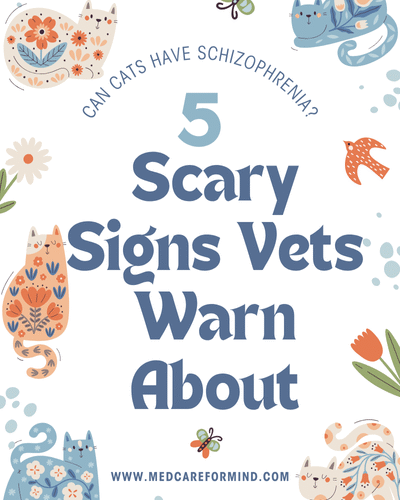
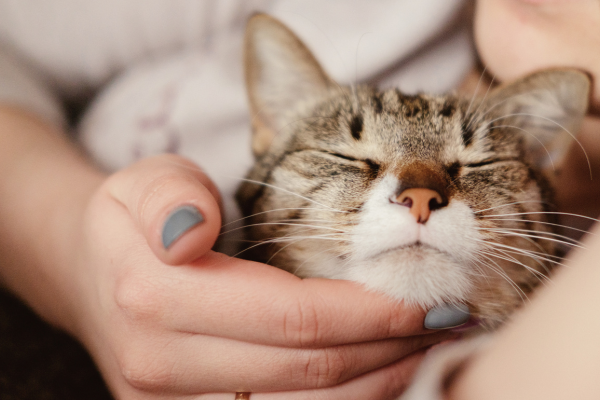 Is It Possible For Cats To Have Schizophrenia?
Is It Possible For Cats To Have Schizophrenia?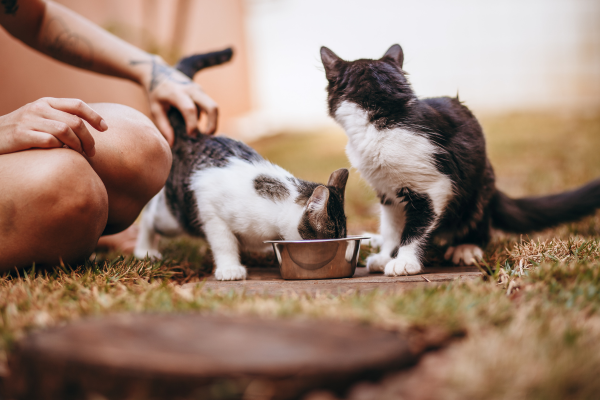 Can My Cat Have Hallucinations?
Can My Cat Have Hallucinations? How Do Vets Diagnose Mental Health Disorders in Cats?
How Do Vets Diagnose Mental Health Disorders in Cats? Treating Feline Hyperesthesia
Treating Feline Hyperesthesia Chewing, Barking, and Shaking: How to Spot an Anxious Animal
Chewing, Barking, and Shaking: How to Spot an Anxious Animal